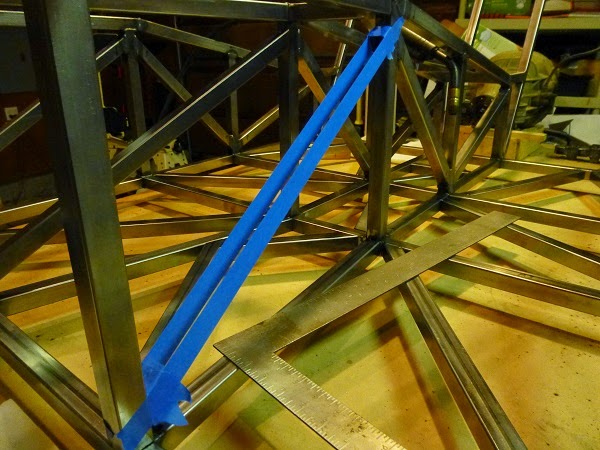Evil, thy name is rust!
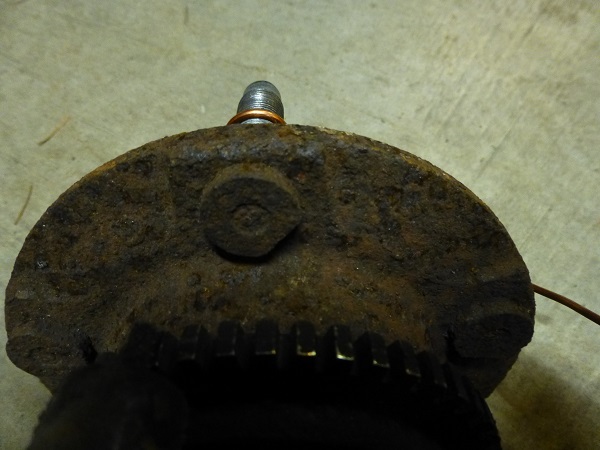
Well, nearly a year has passed with no physical progress on the car. Plenty of investigating new ideas, designing, and planning have occurred, but nothing tangible. However, I got the perfect Valentine’s Day gift from SWEETA this year. Garage time! Not just after everybody had already gone to sleep, like I normally relegate myself to, but during the day as needed to take on scourge of steel…Rust.
The previous weekend, I had actually started modifying the spindles to accept a standard aftermarket lower ball joint. This needed to happen before I could take measurements that would allow me to design a front suspension geometry that will match my preliminary rear geometry. The problem being that I also was uncertain that these particular spindles would be worth continuing my efforts with, as they were originally purchased back when we lived in the rust belt, and looked every bit of it.
I looked into potential alternative spindle options, but decided to first see just how well these ones might clean up. A little research into de-rusting methods led me to decide on electrolysis. I mean, if it works on unwanted hair…So why not unwanted rust, right?
So here the setup for my little ‘science fair experiment’ that I ran over the weekend.
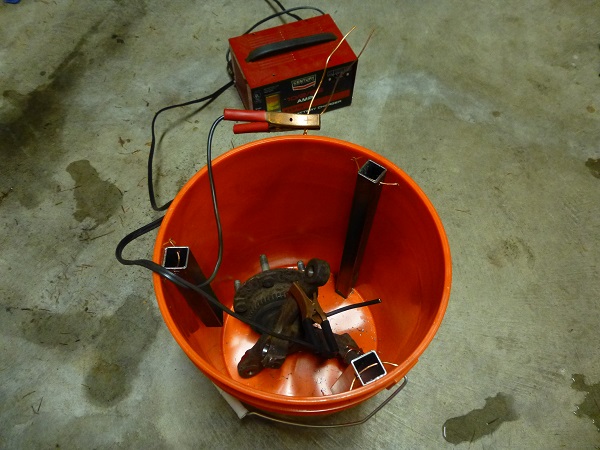
There is an array of three pieces of scrap mild steel^ that act as the anode, being sacrificed to the car gods. Well, I hope they were scrap. But it’s been a long time, so I’m not totally positive. Then again, if they weren’t scrap before, they certainly are now.
The part being de-rusted acts as the cathode, and the battery charger supplies the necessary electrical current. The bucket is then filled with an electrolyte solution^^ typically made from 1 tbsp washing soda or baking soda per gallon of water. Apparently you can also convert baking soda into washing soda by baking it…Which begs the question of whether that means you can also convert washing soda into baking soda by washing it? Anyways, after adding 4 gallons of the electrolyte mixture to the 5 gallon bucket, I was ready to go. Almost immediately after plugging in the battery charger, set at 12V/10A, it started to work. There was a ‘fizzing’ of hydrogen^ and oxygen being released, and while rust particles began to invade the solution.
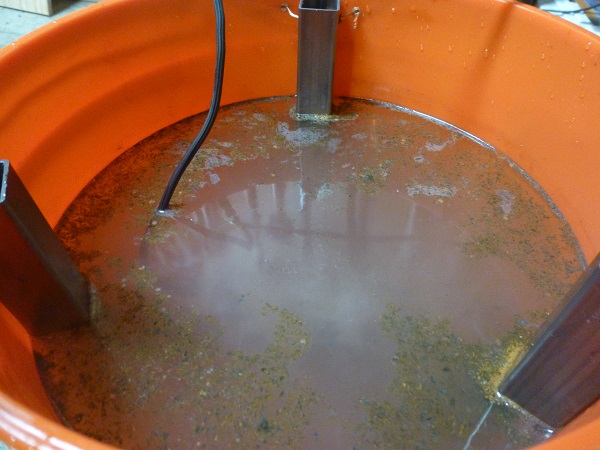
After a while, the water began to look much less inviting.
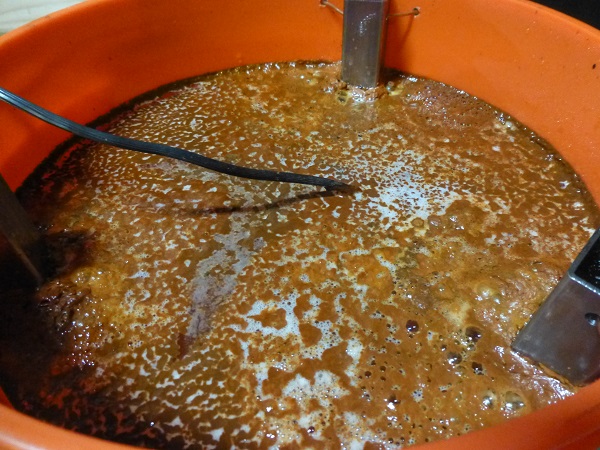
And whenever the amperage would drop into the 2A-4A range, I knew the anodes could use a cleaning.
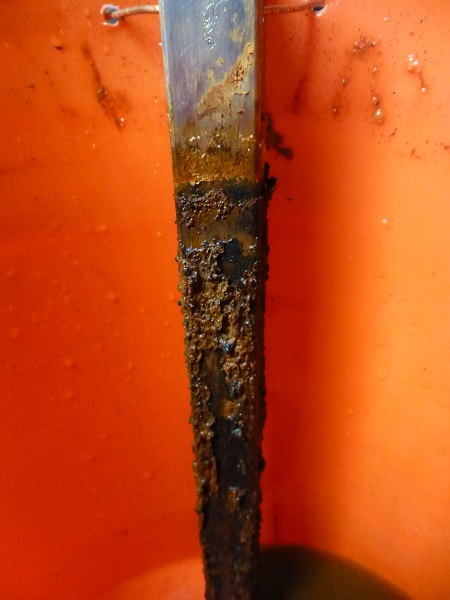
At this point, I would skim the surface of the water to remove the sludge buildup on the surface…After unplugging the battery charger of course. I would then remove the part from the water (rubber gloves are helpful here), transfer almost all of the solution to a second bucket, dump the little bit of heavier sludge**** that had settled on the bottom, clean the anodes, put it all back together, and top off the water. Remember that while the release of hydrogen and oxygen may lower the water level, the no sodium carbonate is released from the solution. So the only need to add sodium carbonate that needs to be added is to account for any solution lost during de-sludging.
As time passed, obviously the amount of rust particulate in the solution increased. However, I also noticed a corresponding increase in the frequency of needing to clean the anodes, and the aggressiveness with which I had to do so to get good amperage when I resumed the process. Early anode cleaning was sufficient with a wire brush, but as the electrolyte became more contaminated I would then hit it with a flap disc on an angle grinder too. Of particular interest was that the spindle didn't appear to be changing anymore, about 12 hours in or so, but I was still getting the floating red sludge. So I decided to totally change out the electrolyte solution, and hit the anodes with an abrasive disc again. Voila! There was nothing but pure electrolysis for the next few hours, with virtually no new rust particulate in the water, rust formation on the anodes, or loss of amperage. My experiment was complete.
So, how did the parts actually turn out? You’ll just have to wait until the next installment to find out…And I promise it won’t take another year!
.
.
^If you would rather not get or give cancer, don’t use stainless steel as your anode. While this requires less cleaning than mild steel, it releases toxic hexavalent chromium into the solution.
^^If you would rather not wage chemical warfare on yourself, much like my previous entry on Phosgene, don’t use table salt (sodium chloride) for your electrolyte. While this will create an electrically conductive solution, it releases toxic chlorine gas. Which can additionally combine with the released hydrogen to create hydrochloric acid.
^^^If you would rather not have your workspace go the way of the Hindenburg, keep your setup in a well ventilated area and keep it away from sparks or flames. This includes pilots for gas water heaters. It is also one of the main reasons for unplugging the battery charger every time before moving anything around on the setup.
^^^^If you’ve followed the preceding precautions, the mixture ‘should’ be non-toxic and environmentally benign.






